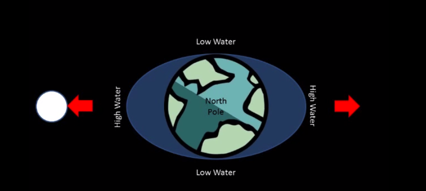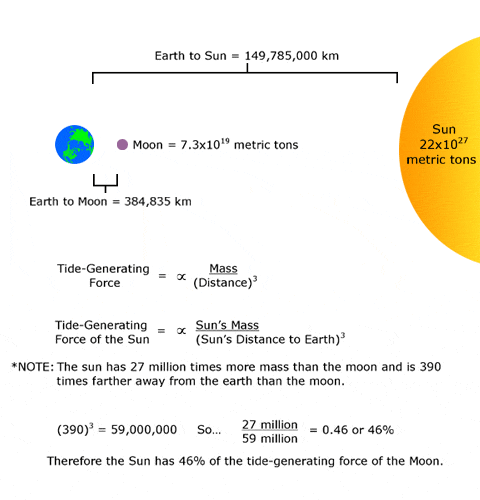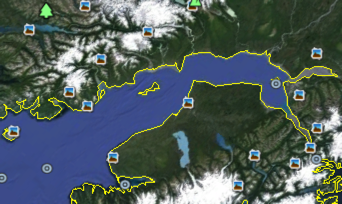How Tides Work
The universal law of gravity states that the
attraction between two bodies is proportional to their
respective masses and inversely proportional to the distance
between them. By definition, "The tidal force is a
secondary effect of the force of gravity and is responsible
for the tides. It arises because the gravitational force
exerted by one body on another is not constant across it;
the nearest side is attracted more strongly than the
farthest side". Gravity is the primary force
involved in creating the "tidal bulge" on the earth's surface.
The ocean is attracted to the moon, pulling water away
from one area, and to another. This effect is most
drastic on the side of the earth closest to the moon. As the
earth rotates, the solid earth spins as if suspended in the
ocean itself. This daily rotation is responsible for the twice
a day high and low tides. If the earth were free of land
masses, the ocean as a whole would move in perfect harmony
with the gravitational pull of the moon. Tides would be
equally proportional with respect to individual lunar days on
the global scale. The manifestation of this force on the
oceans is affected on multiple orders of magnitude. On the
largest scale, continental bathymetry (sub-marine shape of
continents) has the largest impact on tides in the regional
perspective (Pacific northwest vs south Atlantic). As we look
closer, the width and depth of individual bays is a scalar for
the tidal forces in the regional area. A classic example of
this is cook inlet here in Alaska (background image). Photos:
The first one is from google earth, the second one is from the
youtube video "understanding tides"
http://www.youtube.com/watch?v=G-MOZId0FNw , and the third one
is from wikipedia


